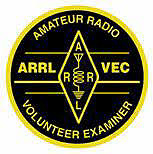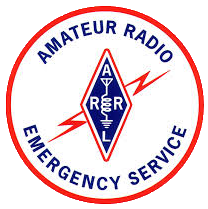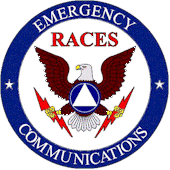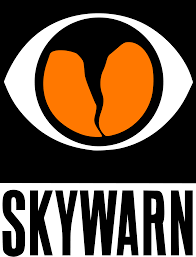Standard Phonetics In Amateur Radio
- Details
- Hits: 14104
In an effort to ensure reliable and understandable communications, the International Telecommunications Union, of which the U.S. is a member, created a standard phonetic alphabet, very similar to the old NATO phonetics.
Why is such a "standard" important? Because when there is a lot of noise and interference it is often difficult to pick out words and spelling is often necessary. By using the standard phonetics we can often determine which phonetic is being used by hearing even a fragment of the word. For instance, if I were phonetically spelling a word and you heard ..rav.. rome... ...ndia... alph... ..vember, you could determine I was spelling BRIAN.
On the other hand, using non-standard phonetics can create confusion and inaccuracies. For instance, the common use of "Kilo-Watt" can be interpreted as the letters K and W. If picking fragments from a noisy signal, a fragment of Watt would be unidentifiable.
For every rule there is an exception. For instance, I'll use standard phonetics for my WX4BK call sign, but will often tell people they can remember it by thinking "Weather for Burger King". I've also used, and recommended the use of, non-standard phonetics on Field Day. Our club call sign, W4FWD, sounds pretty boring as November Four Foxtrot Whiskey Delta, but captures attention when Whiskey 4 Four-Wheel-Drive is used. However, when called out of the pile-up I revert back to standard phonetics.
| A - Alfa B - Bravo C - Charlie D - Delta E - Echo F - Foxtrot G - Golf H - Hotel I - India J - Juliet K - Kilo L - Lima M - Mike |
N - November O - Oscar P - Papa Q - Quebec R - Romeo S - Sierra T - Tango U - Uniform V - Victor W - Whiskey X - X-Ray Y - Yankee Z - Zulu |
Of course, being human, we'll make mistakes. Sometimes we can't remember the proper phonetic, in which case I recommend using whatever comes to mind (assuming it's suitable to be broadcast over the air).
However, non-standard phonetics should be used judiciously, as what you do in practice you will do under stress, and EMCOMM can be stressful. Use "Kilowatt" or "Weather for Burger King" every day, and that's what you'll do during an emergency, or just as bad, hesitate groping for the right phonetics.
Practice makes perfect, so while we'll all have the occasional bit of fun with phonetics, remember they serve an important purpose, and the use of the standard phonetic alphabet should be perfected.
Why Should You Try Net Control?
- Details
- Hits: 11973
Every task we perform in life gets better with repetition, and being a Net Control station is no different. So, the best way to be good at it is to do it periodically to hone your skills. Of course, you may be thinking to yourself, I have no interest in being a net control station and I could go through life just fine without giving it a try.
That is true! You could make a conscious effort to never ever be a net control station. There are people who never bother to learn to swim and make a conscious effort to just avoid it, counting on never finding themselves in deep water. Most will get away with it, but it doesn't work out so well for the one who breaks from the odds.
In an emergency situation there is no telling who will be available for any particular task at a given moment. Perhaps the typical net control persons are affected by the emergency, or the only net control station has equipment failures. For that reason, most all emergency response plans include the policy that ANY amateur radio operator is authorized and expected to initiate a net and act as NCS if circumstances warrant it.
Many of our newer hams won't recall the constant tornado weather conditions we had several years ago. It seemed we were having nets almost every day and quite often without warning. The Carroll ARES Weather Net Protocol, which is available on the nets page of wgars.com as well at wx4bk.com, states:
FIeld Day and EMCOMM
- Details
- Hits: 12460
Field Day is viewed by some operators as a fun weekend of contesting, some as an educational event, some as an opportunity to practice their operating skills, and by others as a weekend of insanity.
It is all of those things, and one more, an opportunity to test our EMCOMM skills. Just as in an emergency, Field day tests our ability to setup, troubleshoot, and operate radio equipment in a remote location in a short period of time. The short setup and operating windows, remote location, and long hours add stress and fatigue to the mix, approximating emergency operations pretty well. Of course, the bigger your team the easier it is, educating us on the value of having as many participants as possible.
ARRL defines the objective of field day as follows: To work as many stations as possible on any and all amateur bands (excluding the 60, 30, 17, and 12-meter bands) and to learn to operate in abnormal situations in less than optimal conditions. Field Day is open to all amateurs in the areas covered by the ARRL/RAC Field Organizations and countries within IARU Region 2.
The event takes place on the last full weekend of June from 1800UTC Saturday (2PM local) until 2059UTC Sunday (5:59PM), with some limited setup allowed on Friday.
Maintenance – A Key To Preparedness
- Details
- Hits: 13520
As amateur radio operators interested in Emergency Communications, we spend a considerable amount of time discussing our radio gear, go-kits, antennas and other equipment we’ve either already accumulated, are about to acquire, or wish we could acquire.
Unfortunately, we often do little to maintain these items once we have them. At least, that’s been true for myself and some other people I’ve worked with. I guess it’s just human nature – and a recipe for trouble.
A few years ago I had my old-beater van stop rolling down the road. Ironically, Gerald (W34RWT) had mentioned hearing a roaring noise coming from the passenger side of my van as we were driving down a highway and he slowed to exit to the interstate. I knew something was going on there but a previous visit to a mechanic found nothing and I shrugged it off. Sure enough, the symptoms I had already seen and the noise that concerned Gerald turned out to be the axle shearing. A little more aggressive work finding the problem would have saved me a towing fee.
Now, you would think the previous story is a lead-in for why we need to be sure our equipment is in operating order. It should be, but its really just setting up for the real story.
EMCOMM and Nets
- Details
- Hits: 13093
As amateur radio operators we may involve ourselves in public service in many different ways, whether as a storm spotter, part of a search team, as a stop on bike rides or runs, or delivering messages when normal communications systems are overloaded. But the one thing all of these tasks have in common is the fact communications is often managed via a net.
Depending upon the nature of the emergency there may be several concurrent nets running at different levels. Here are some examples:
Weather Nets
When the National Weather Service activates their storm spotters they will often activate our regional linked repeater network. The Linked Repeater Network consists of a group of repeaters that have secondary transceivers on them, allowing them to link together to create an expanded area where any traffic on any one repeater is heard on all.
However, if every amateur radio storm spotter reported on that net it would quickly become overloaded. Additionally, there is often the need to communicate local information that is not appropriate for a regional net. The solution is for each county or city to operate a local net and relay weather conditions that meet NWS reporting requirements.
Fox Hunting: Training for SAR
- Details
- Hits: 13115
This topic is based upon a presentation made by WD8LQT (John Playford) at a West Georgia Amateur Radio Club meeting, in preparation for an upcoming “Fox Hunt”.
“Fox Hunting” is a fun hide-and-seek using radio that also provides practice in locating malfunctioning transmitters, generators of harmful interference, and even lost people & downed aircraft.
In a “fox hunt” the “fox” hides a radio transmitter for the hunters to locate. The radio usually transmits a message for a period of time (30 seconds to a minute), followed by an equal period of silence. The message is often a Morse Code ID of the unit and/or an audio message identifying the station.
Hunters can use a variety of equipment, ranging from a simple scanner to elaborate receivers that will literally point the hunter towards the signal by measuring the time difference between signal receipt between two antennas. We'll cover a few of the basic techniques used now, but before we do it's important to keep in mind that all the different options have strengths and weaknesses:
Emergency Locator Transmitters
- Details
- Hits: 15461
ELTs, or Emergency Locator Transmitters, are Search and Rescue devices utilized in aviation and marine environments. Other similar technologies include EPIRBs (Emergency Position Indicating Radio Beacons) and PLBs (Personal Locator Beacons).
I've covered emergency radio frequencies in a previous presentation entitled “International Distress Frequencies”, but much of that also includes maritime and as the title implies, international radio communications protocols. In this area the most likely distress signal will be aviation related.
Aircraft use one of two types of Search and Rescue (SAR) distress systems: Legacy “analog” ELTs or the new 406Mhz digital ELTs.
The new 406Mhz ELTs are satellite monitored and can, optionally, transmit GPS information. Satellites can localize the signal to a small geographical area utilizing Doppler Shift, although these ELTs can also transmit GPS data.
Amateur Radio & EMCOMM Law
- Details
- Hits: 12460
Amateur Radio is unique from other hobbies in that being licensed carries certain duties and authority extended to it in the name of public safety.
Unlike other hobbies that are licensed (hunting, fishing, pilots, and others), amateur radio operators are given special privileges during emergencies solely because of the unique nature of our hobby.
We are governed by Title 47, Part 97 (which we normally just refer to as Part 97) which explicitly states: (a) Recognition and enhancement of the value of the amateur service to the public as a voluntary noncommercial communication service, particularly with respect to providing emergency communications.
Most of us know about our charge to use our skills to provide assistance in an emergency. But did you know the law actually empowers us to operate outside of the Amateur Band during emergencies? To be clear, to be classified as an “emergency” life and/or property must be in
Join Carroll ARES
- Details
- Hits: 12839
Carroll County Amateur Radio Emergency Service (ARES) is always looking for new members.
Emergency Communications is a part of the service amateur radio operators return for the allocation of radio frequencies to our hobby, and ARES is one of the several ways to serve. ARES is intended to be a resource for:
- Hospitals
- Local, Regional, and State Agencies
- National Weather Service (SKYWARN)
- Other NGOs (Non-Governmental Organizations)
- Community Events
I hope you'll take the time to join us on our weekly net, on the N4FWD repeater (146.640-131.8) on Thursdays at 8:00PM.
Page 5 of 7




